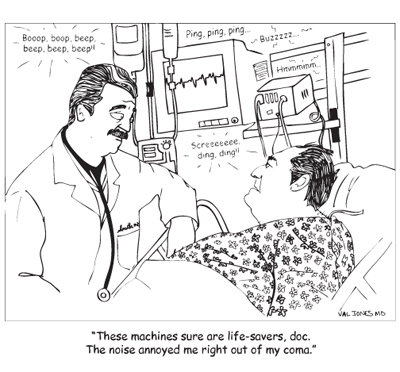December 17th, 2010 by DrRob in Better Health Network, Health Tips, True Stories
No Comments »

Everyone liked him. Though his later years (the only ones in which I knew him) took away his ability to do most things, and though he was in great pain every day, it was easy to see the mischief in his eyes. The subtle humor was still there, coming out of a man who was weak, in pain, dying.
She lived for him. She was always telling me of his pain, frustrated with the fact that he didn’t tell me enough. She was anxious about each complaint of his, wondering if this was the one that would take him away from her. Many of her problems were driven by this anxiety and fears, and she spent many hours in my office giving witness to them through her tears.
As his health failed, I wondered about her future. He was the center of her life, the source of her energy, joy, purpose. How could she manage life without him? How could she, who had so much lived off of the care of this wonderful man, find meaning and purpose in a life without his calming presence?
Then he died. Read more »
*This blog post was originally published at Musings of a Distractible Mind*
September 25th, 2010 by AndrewSchorr in Better Health Network, True Stories
No Comments »

The old joke about psychological therapists is they are among the biggest consumers of therapy themselves. Lately, I have been noticing more and more how a significant portion of the people we meet wearing white lab coats have a very personal connection to the medical work they do. For them it is not a job, a meal ticket, or just putting their years of training into practice, it is a mission connected to something in their past, something in their own body, or the health of a loved one.
A recent example is Kaiten Kormanik. She is 23 and has had the genetic condition PKU since birth. She has to follow a strict low protein diet or otherwise risk severe negative effects on her brain. If you toured the labs of The Children’s Hospital of UPMC in Pittsburgh you might bump into her as she does research for her Ph.D. on, guess what?- genetic illnesses in children. And she often works alongside Dr. Gerald Vockley, the very expert physician who guides her care. As you can imagine, Kaitlen thinks about her own childhood and the faces of other children every day. You can hear her story on one of our recent programs.
Irl Hirsh, M.D., at the University of Washington, is one of America’s most famous diabetes doctors. He has diabetes himself and has all the challenges everyone with this disease has in managing it. You can hear his story on one of our earlier programs on diabetes. Read more »
*This blog post was originally published at Andrew's Blog*
September 17th, 2010 by DrWes in Better Health Network, Humor, News, Opinion
No Comments »

An excellent opinion piece by Sally Satel, M.D., a psychiatrist, appeared in the Wall Street Journal this morning about white coat ceremonies as ways to reinforce the humanistic qualities of medicine. The best part, however, was this perspective:
But the question of whether empathy can be taught—and, in particular, whether a white-coat ceremony is a good means for promoting that virtue—is a matter of some debate.
Judah Goldberg, a young doctor at Chilton Memorial Hospital in New Jersey raises an intriguing paradox. He asks how the white coat can bring doctors closer to the subjective experience of patients when, as an icon of the profession, it is meant to isolate and distinguish them from the lay community.
“To the extent that empathy can be taught through a ritual,” Dr. Goldberg told me, “a hospital gown, the common garb of human frailty, would be more fitting than a distancing white coat.”
I must say, the thought of everyone seeing each others’ posterior sides as they paraded across the stage at such a ceremony did make me smile. Read more »
*This blog post was originally published at Dr. Wes*













